|
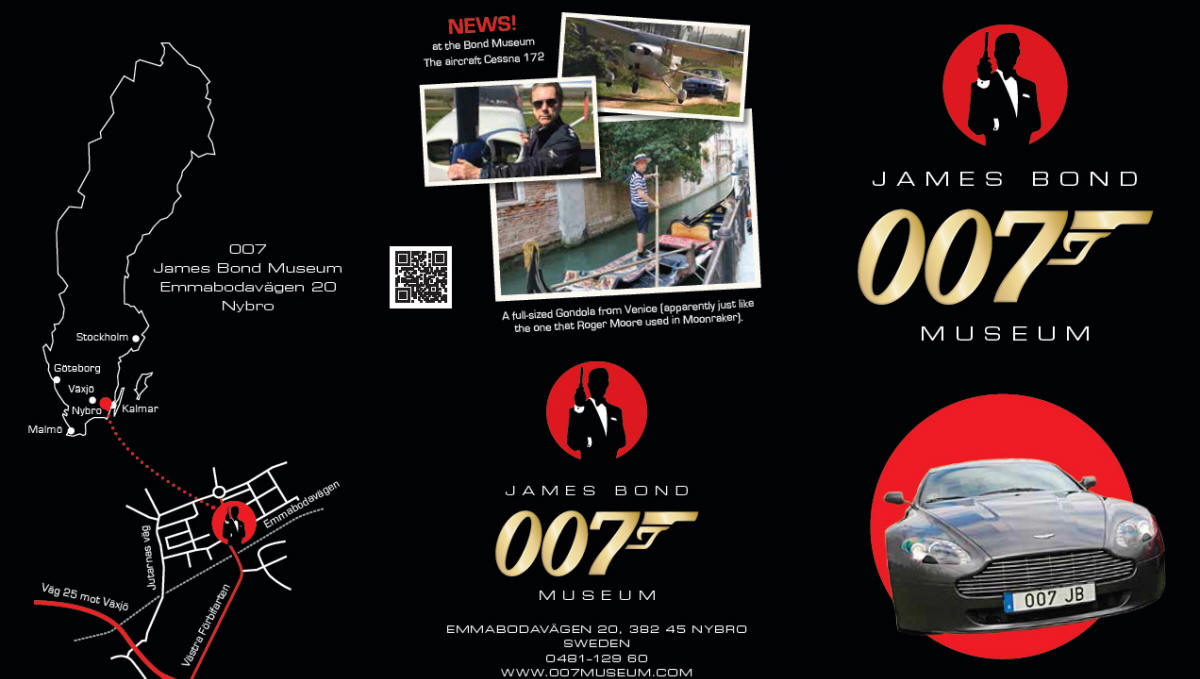 . .
|
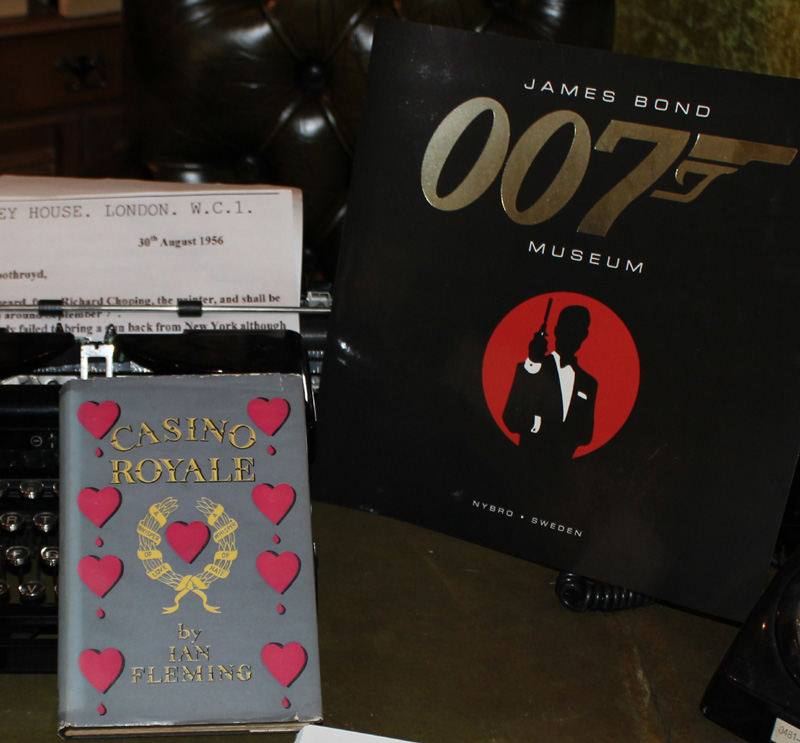
Casino Royale
Ian Flemings first book first impression first print 1953 in The James Bond 007
Museum
|
In the novel that introduced James Bond to the world, Ian Fleming’s
agent 007 is dispatched to a French casino in Royale-les-Eaux. His
mission? Bankrupt a ruthless Russian agent who’s been on a bad luck
streak at the baccarat table.
One of SMERSH’s most deadly operatives, the man known only as “Le
Chiffre,” has been a prime target of the British Secret Service for
years. If Bond can wipe out his bankroll, Le Chiffre will likely be
“retired” by his paymasters in Moscow. But what if the cards won’t
cooperate? After a brutal night at the gaming tables, Bond soon finds
himself dodging would-be assassins, fighting off brutal torturers, and
going all-in to save the life of his beautiful female counterpart, Vesper
Lynd.
Taut, tense, and effortlessly stylish, Ian Fleming’s inaugural James
Bond adventure has all the hallmarks that made the series a touchstone for
a generation of readers
|
BY
IAN
FLEMING
LONDON
PUBLISHED,
JONATHAN CAPE 1953
1 .CASINO
ROYALE 1953
2. LIVE
AND LET DIE 1954
3. MOONRAKER
(1955)
4. Diamonds
Are Forever 1956
5 .From
Russia With Love 1957
6. Doctor No
(1958)
7. GOLDFINGER
(1959)
8 .For
Your Eyes Only (1960)
9. THUNDERBALL
(1961)
10.THE
SPY WHO LOVED ME (1962)
11.On Her
Majesty's Secret Service (1963)
12.You Only Live
Twice (1964)
13.THE
MAN WITH THE GOLDEN GUN (1965)
14.Octopussy
and the Living Daylights (1966)
Ian Fleming's James Bond Titles
Title Published Film Released
1. Casino Royale 1953 1967 and 2006
2. Live and Let Die 1954, 1973
3. Moonraker 1955, 1979
4. Diamonds Are Forever 1956, 1971
5. From Russia With Love 1957, 1963
6. Doctor No 1958, 1962
7. Goldfinger 1959, 1964
8. For Your Eyes Only (short stories) 1960
From A View To A Kill 1985
For Your Eyes Only 1981
Quantum of Solace 2008
Risico
The Hildebrand Rarity
9. Thunderball 1961, 1965
10. The Spy Who Loved Me 1962, 1977
11. On Her Majesty's Secret Service 1963, 1969
12. You Only Live Twice 1964, 1967
13. The Man With The Golden Gun 1965, 1974
14. Octopussy & The Living Daylights (short stories) 1966
Octopussy 1983
The Living Daylights 1987
The Property Of A Lady
Ian Fleming's Non-Bond books
Title Published Film released
Chitty Chitty Bang Bang 1964 1968
Thrilling Cities 1963
The Diamond Smugglers 1957 |
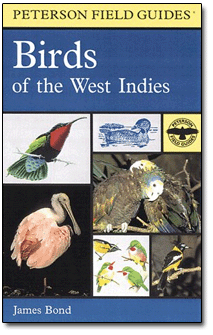
James Bond (January 4, 1900 – February 14, 1989) was a leading American ornithologist whose name was appropriated by writer Ian Fleming for his fictional spy James
Bond.


Ian Fleming Publications Ltd and the Ian Fleming Estate are delighted to
unveil our new official logo - See more at:
http://www.ianfleming.com/presenting-our-new-logo/#sthash.AcMYTMrb.dpuf
|
|
Ian Flemings Books
Casino Royale (1953)
Live And Let Die (1954)
Moonraker (1955)
Diamonds Are Forever (1956)
From Russia With Love (1957)
Doctor No (1958)
Goldfinger (1959)
For Your Eyes Only (1960)
Thunderball (1961)
The Spy Who Loved Me (1962)
On Her Majesty's Secret Service (1963)
You Only Live Twice (1964)
The Man With The Golden Gun (1965)
Octopussy and the Living Daylights (1966)
The Royal flatbed typewriters were the only unique
design that the Royal company put on the market. But when it came to
work horses, the company introduced one price winner after the other for
decades. And from the 1930s on, the line included portables. The Quiet
De Luxe was the flagship for many years.
In the late 1940s Royal had the Quiet De Luxe redesigned
by Henry Dreyfuss who came up with the model shown on this page. It is
not the kind of machine that deserves a place in a museum for antique
typewriters, except that this one is... made of gold. Not solid gold,
but plated.
The gold-plated machine was produced in a limited edition
and sold at a considerable price. Apparently, one of them was owned by
author Ian Fleming.
Courtesy of: Robert collection 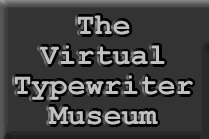
Ian Fleming, the father of James Bond
Ian Fleming was born in 1908. He was a British writer
who wrote books about an English spy called James Bond with the codename
007.
The 00 stands for that he’s got license to kill anyone, anytime,
anywhere.
At the time of his writing the cold war was at its peak.The cold war was
also one reason why his books became as successful as they did.
Ian Flemming wrote twelve books about the spy James Bond.
In 1964 Ian Fleming died and at that time only two James Bond films had
been produced. It was the movies that made James Bond famous worldwide.
James Bond Actors
There’s been five actors playing Mr Bond more than one
time:
Sean Connery, Roger Moore, Timothy Dalton, Pierce Brosnan and Daniel Craig
Many people have different opinions which of them is the real Bond.
Most of them say it’s Sean Connery because he was first playing Bond.
I think Pierce Brosnan is best as James Bond
James Bond
James Bond works for the British government and gets his
missions from them.
The stories about James Bond are all about how he tricks all his enemies
and gets all the nice women. His enemies are often Russian criminals.
This seems to be a common action story but the Bond films are special.
James Bond is never stressed or scared. Even if he is in a very critical
situation like jumping after an aeroplane which is falling to the ground
climb into the plane and fly away with it.
This seems to be very dangerous but for Mr Bond it’s a piece of cake.
At his base in London somewhere he’s got this guy who helps him called
Q. He’s participated in almost every bond movie.
He produces lots of gadgets in his laboratory, which are supposed to help
Mr Bond on his missions. In every film he gets a new car from Q.
Q always tells bond to be careful with the car and he’s like yeah yeah
and crashes the car in every film.
We also have this woman called moneypenny, who seems to be in love with Mr
Bond but never gets him.
Another classical character in the bond films is one of his enemies who is
a very big man called Jaws. He’s got metal teeth and is very strong but
he’s not very smart so he always screws up and falls out of aeroplanes
without a parachute but always survives. He never says anything and no one
knows why. One exemption for that is in the film moonraker when he becomes
friend with Mr Bond says cheers with a champagne glass in his hands.
Mr Bond also has some things he says in every film like “Hi my name is
Bond, James Bond” and “I want dry martini shaken not stirred”.
All these things are classical for almost every bond film.
Some other classical things in the bond films are all the sponsors that
want their names in the film. In the early movies Mr Bond always drove an
Aston Martin car but in today’s movies he drives a BMW.
He’s always got an Ericsson cellphone and he always drinks Bollinger
Champagne.
Why did these companies pay money to have their name in the film?
Some people have Mr Bond as an idol and they want to be alike him and
hopefully they will use the same champagne or the same car as he does.
That may sound very farfetched but they actually make more money out of
this then they pay for having their name in the films.
|
First
Edition 1953 Ian Fleming James Bond Casino
Royale
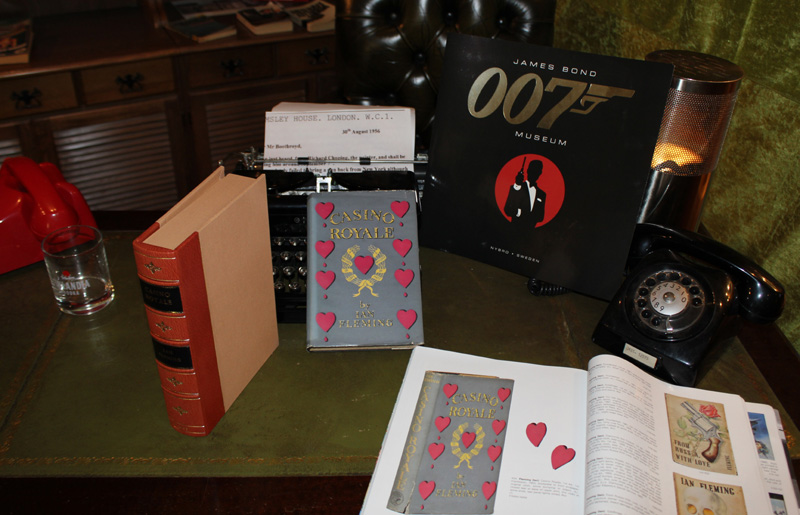
Dominic winter book auctions in Gloucestershire.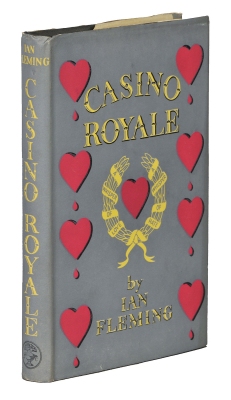
Ian Flemings book Casino Royale sold for 19000 GBP.
Dominic winter book auctions in Gloucestershire.
Fleming (Ian). Casino Royale, 1st ed., 1st impression, 1953, original.
Ian Flemings Literary Career began with Casino
Royale, published in 1952, ... 4728 copies
were sold within a month, reviews were favourable, and a British ...
The 1953 book, which sold for £4,000 more than expected, was the top lot at
a sale at which Live and Let Die - the second Bond novel - went for £6,600.
A copy of Moonraker, the third in the series, sold for £7,200.
Auctioneer Dominic Winter said "the strikingly colourful" Bond first
editions had "always been one of the surest certainties over the last 30
years".
"The 007 film industry has helped that impetus by drawing in thousands of
new fans keen to buy into the James Bond fantasy," he said.
It is thought the highest price for a Bond first edition was the £22,750 a
signed copy of From Russia With Love fetched at Bloomsbury Auctions in London in
2004.
A signed first edition of Casino Royale is believed to have sold for £21,000,
also at Bloomsbury, the following year 2005.
First attempt: "Scent and smoke and sweat hit the taste
buds with an acid thwack at three o'clock in the morning"
Second try: "Scent and smoke and sweat can suddenly
combine together and hit the taste buds with an acid shock at three o'clock in
the morning"
Finally (and satisfied): "The scent and smoke and sweat
of a casino are nauseating at three in the morning".
So began Casino
Royale, the first adventure of James Bond, completed in March 1952 and
published the following year. Ian Fleming was 43. Although he had experience
of journalism, this was his first attempt at a book.
He sent it to his friend, the poet William Plomer, who in turn recommended it
to Jonathan
Cape, publishers. 4,750 copies were sold within a month, reviews were
favourable, and a
British cultural hero was born.
Live and
Let Die followed the next year, 1954, Moonraker
in 1955, and thereafter a Bond
title a year was published until Ian Fleming's death in 1964.
Fleming maintained his job at the Sunday Times, where he was foreign
manager. He would ask the foreign correspondents, such as Anthony Terry in
Berlin, for help with details about, for example, trains or local
geography. He contributed a chapter on 'Foreign News' to the Kemsley
Manual of Journalism. From 1953 - 6 he wrote the Atticus column
in the Sunday Times, writing about a range of obscure incidents and
interesting facts and mild gossip.
Keeping true to his promise made at the end of the war, he did return to
Jamaica, and he built a modest bungalow in a beautiful position on the North
shore. He named it Goldeneye.
Somehow he persuaded his employers to allow him 2 months a year off to go to
Jamaica, and so it was there, in January and February every year from 1952,
that he wrote his novels.
...while I still do a certain amount of writing in the midst of my
London life, it is on my annual visits to Jamaica that all my books have
been written.
Published by Jonathan Cape in London in 1953, with the essential 'First Published
1953' to the inner page, with
no later titles stated, this is not the book club edition,
not the US edition and not a later printing - this is
the first printing of the James Bond adventure.
BY
IAN FLEMING
LONDON
PUBLISHED,
JONATHAN CAPE 1953
CASINO ROYALE
1953
Live And Let Die (1954)
MOONRAKER (1955)
Diamonds Are Forever (1956)
From Russia With Love (1957)
Doctor No (1958)
GOLDFINGER (1959)
For Your Eyes Only (1960)
THUNDERBALL
(1961)
THE
SPY WHO LOVED ME (1962)
On Her Majesty's Secret Service (1963)
You Only Live Twice (1964)
THE MAN WITH THE GOLDEN GUN (1965)
Octopussy and the Living Daylights (1966)
Ian Fleming's James Bond Titles
Title Published Film Released
1. Casino Royale 1953 1967 and 2006
2. Live and Let Die 1954 1973
3. Moonraker 1955 1979
4. Diamonds Are Forever 1956 1971
5. From Russia With Love 1957 1963
6. Doctor No 1958 1962
7. Goldfinger 1959 1964
8. For Your Eyes Only (short stories) 1960
From A View To A Kill 1985
For Your Eyes Only 1981
Quantum of Solace 2008
Risico
The Hildebrand Rarity
9. Thunderball 1961 1965
10. The Spy Who Loved Me 1962 1977
11. On Her Majesty's Secret Service 1963 1969
12. You Only Live Twice 1964 1967
13. The Man With The Golden Gun 1965 1974
14. Octopussy & The Living Daylights (short stories) 1966
Octopussy 1983
The Living Daylights 1987
The Property Of A Lady
Ian Fleming's Non-Bond books
Title Published Film released
Chitty Chitty Bang Bang 1964 1968
Thrilling Cities 1963
The Diamond Smugglers 1957
"I wanted the simplest, dullest,
plainest-sounding name I could think of. James Bond seemed perfect."
-Ian Fleming
While he may be the world's most famous,
glamorous secret agent, let's face it, his name is pretty dull. In a way
it is fitting, Fleming achieved exactally what he wanted to with the name.
He actually found it sitting on his bookshelf in the author of a book
entitled "Bird's Of The West Indies." And like that, history was
made!
James Bond (January 4, 1900 – February 14, 1989) was a leading American ornithologist whose name was appropriated by writer Ian Fleming for his fictional spy James
Bond.
|
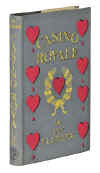
Published 13th April 1953 by Jonathan Cape in London |
CASINO ROYALE
1953
Published in 1953 by Jonathan Cape in London
Black cloth & red lettering & heart on front board
Verso title page states "First Published 1953"
Dust wrapper priced at 10s.6d
Rear panel has pencil drawing of Ian Fleming by Bartlett,
with blurb about Fleming's life below
Front flap has blurb with jacket credit immediately below
There should be NO Times review
Rear flap is blank but for title, author, Cape & price
in bottom left corner
4,728 copies were bound up, a large number of which
went to public libraries
|
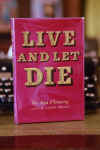
Published 5th May 1954 by Jonathan Cape
in London
|
LIVE
AND LET DIE 1954
Published in 1954 by Jonathan Cape in London
Black cloth & gilt lettering & gilt medallion on
front board
Verso title page states "First Published 1954"
Dust wrapper priced at 10s.6d
There are 3 states of 1st edition dust wrappers
First State : No credit for jacket design on front
flap
Second State : 2 line credit is positioned midway
between blurb end & price
Third State : 2 line credit is positioned directly
under the blurb
7,500 copies were printed of the 1st edition
|

Published 7th April 1955 by Jonathan Cape in
London |
MOONRAKER
1955
Published in 1955 by Jonathan Cape in London
Black cloth & silver lettering
Verso title page states "First Published 1955"
Dust wrapper priced at 10s.6d
There is a "semi issue point" Page 10 last line shoot
/ shoo
No priority established but I believe shoot to be
preferable
There are also 2 paper thicknesses
One text block measures 19mm whilst the other is 15mm
The 15mm is poorer quality and prone to browning
The 1st print run was 9,900 copies
|
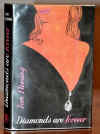
Published 26th March 1956 by
Jonathan Cape in
London
|
Diamonds
Are Forever 1956
Published in 1956 by Jonathan Cape in London
Black cloth & silver lettering
Verso title page states "First Published 1956"
Dust wrapper priced at 12s.6d
The 1st print run was 14,700 copies
|
From
Russia With Love 1957

Published 8th April 1957 by
Jonathan Cape in
London
|
From
Russia With Love 1957
Published in 1957 by Jonathan Cape in London
Black decorated cloth
Verso title page states "First Published 1957"
Dustwrapper priced at 13s.6d
The 1st set of sheets were of poor print quality and
rejected by Cape
These were later sent to the book club
This means that, theoretically, the '1st printing' is the
book club edition
Note: The Cape sheets have Cape name and logos on title
page
Those with 'Book Club' are later printings and the above
does not apply
The Cape edition was published first, and is the first
edition
The 1st print run was 15,000 copies
|
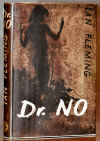
Published 31st March 1958 by Cape in London
|
Dr No (1958)
Published in 1958 by Jonathan Cape in London
Black cloth with or without "dancing girl"
figure
Verso title page states "First Published 1958"
Dust jacket priced at 13s.6d
There is no priority established for the dancing girl
From experience, the ones without the figure appear to be
rarer
The 1st print run was 20,000 copies
|

Published 23rd March 1959 by
Jonathan Cape in
London
|
GOLDFINGER
1959
Published in 1959 by Jonathan Cape in London
Black cloth gilt lettering , skull embossed on front board
Verso title page states "First Published 1959"
Dustwrapper priced at 15s
The 1st print run was 24,000 copies
|
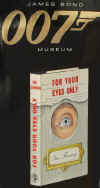
Published 11th April 1960 by
Jonathan Cape in
London
|
For Your Eyes Only (1960)
Published in 1960 by Jonathan Cape in London
Black cloth, gilt lettering , eye design on front board
Verso title page states "First Published 1960"
Dust wrapper priced at 15s
The 1st print run was 21,712 copies
|
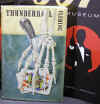
Published 27th March 1961 by
Jonathan Cape in
London
|
THUNDERBALL
(1961)
Published in 1961 by Jonathan Cape in London
Black cloth, gilt lettering , skeletal hand on front board
Verso title page states "First Published 1961"
Dust wrapper priced at 15s
The 1st print run was 50,938 copies
|
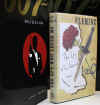
Published 16th April 1962 by
Jonathan Cape in
London
|
THE
SPY WHO LOVED ME (1962)
Published in 1962 by Jonathan Cape in London
Black cloth, silver lettering , with a dagger on the front
board
Verso title page states "First Published 1962"
Dust wrapper priced at 15s
There are copies with a quad mark
between the E & M of Fleming on the title page
This mark is not on the proof sheets and was just a spacer
that worked loose during the print run
No priority officially established and not of
bibliographical importance, but copies with quad mark are
very much scarcer and consequently fetch a premium
The 1st print run was 30,000 copies
|
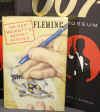
Published 1st April 1963 by
Jonathan Cape in
London
|
On Her Majesty's Secret Service (1963)
Published in 1963 by Jonathan Cape in London
Black cloth, silver lettering , track design on front
board
Verso title page states "First Published 1963"
Dust wrapper priced at 16s
The 1st print run was 45,000 copies
There is a signed limited edition of this title
250 numbered copies - but unnumbered copies also turn up
Jonathan Cape's records suggest there should be approx 43
unnumbered
Ten of these were given to Ian Fleming the rest intended
as presentation copies
The 1st print run was 45,000 copies
|

Published 16th March 1964 by
Jonathan Cape in
London
|
You
Only Live Twice (1964)
Published in 1964 by Jonathan Cape in London
Black cloth, silver lettering , Japanese lettering on
front board
Verso title page states "First Published 1964"
Note: "First Published March 1964" is second
state
Dust wrapper priced at 16s
The 1st print run was 56,000 copies
|

Published 1st April 1965 by
Jonathan Cape in
London
|
THE MAN WITH THE GOLDEN GUN
(1965)
Published in 1965 by Jonathan Cape in London
Black cloth, gilt lettering
Verso title page states "First Published 1965"
Copies exist with a gun in gilt on the front boards
Dust wrapper priced at 18s
The 1st print run was 82,000 copies
|
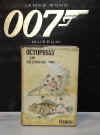
Published 23rd June 1966 by
Jonathan Cape in
London
|
Octopussy and the Living Daylights (1966)
Published in 1966 by Jonathan Cape in London
Black cloth, gilt lettering
Verso title page states "First Published 1966"
This title was repriced in order to clear remaining copies
Contrary to popular opinion it was not actually
remaindered
A London bookseller bought the last 32,000 copies directly.
He gradually sold them for £1.50 each
Copies with unclipped jackets and
no signs of a price sticker are preferred
Dust wrapper priced at 10s.6d
The 1st print run was 50,000 copies
|
|
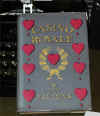













|
|
Ian Flemings liv blir film igen! 3 gången gillt?
Ian Lancaster Flemings böcker har gett upphov till en upp
14 filmer. Med 47 år på nacken är James Bond-serien
den tidsmässigt längsta filmsviten någonsin, men Ian Fleming hann
bara se två filmer innan han dog.
Ian Fleming som filmen heter kommer att produceras av
Leonardo DiCaprios produktionsbolag Appian Way. Något som öppnar för
att DiCaprio själv kommer att spela huvudrollen. Manusförfattaren
heter John Orloff (A Mighty Heart) och har tidigare bland annat
skrivit två avsnitt av Band of Brothers.
Ingen regissör har tillsatts ännu.
Det är inte första gången Ian Flemings liv blir filmad, redan 1989
kom filmen "Goldeneye" med Charles Dance som Ian Fleming och
1990 kom "Spymaker "med inte minfdre än Sean Connerys son
Jason Connery som filmade Ian Flemings liv.
Vad man kan säga om dessa två filmer är väl att info. om Flemings
liv är tvivelaktigt uppbygd, vi får se hur denna landar hos kritikerna.ttp://www.007mus
|
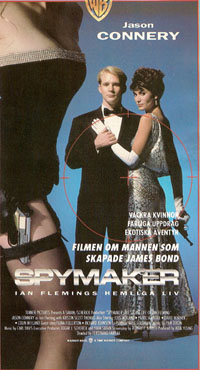
SPYMAKER Jason Connery
Utgiven
1990 längd 100
min
Regissör: Ferdinand Faifax
|
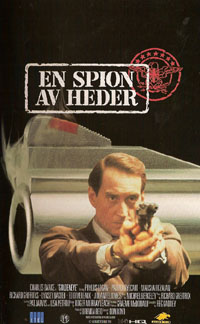
Goldeneye: En spion av heder
-
Charles Dance
Utgiven1989 längd 104 min
Regissör: Don Boyd |
Scottish cutie, James McAvoy, seen with
Keira Knightley in Atonement, showed he could play both
sensitive and sophisticated, as well as gruff and tumble, which is
good since he'll need both, as he's been picked to portray Ian
Fleming in an upcoming biopic of the man who brought James Bond to
life,
The man whose own experiences as both a playboy and as a commander
in the Royal Navy inspired his divining James Bond into being. We
first get introduced to the dashing and debonair secret agent, 007,
in Fleming's first novel, Casino Royale.
The Bond franchise has been hugely successful, and
we would think so would a movie about its creator, who died in 1964.
With that success, though, comes the devoted legions who are
protective about its main character, who, it is not a stretch to
think, is Fleming. |
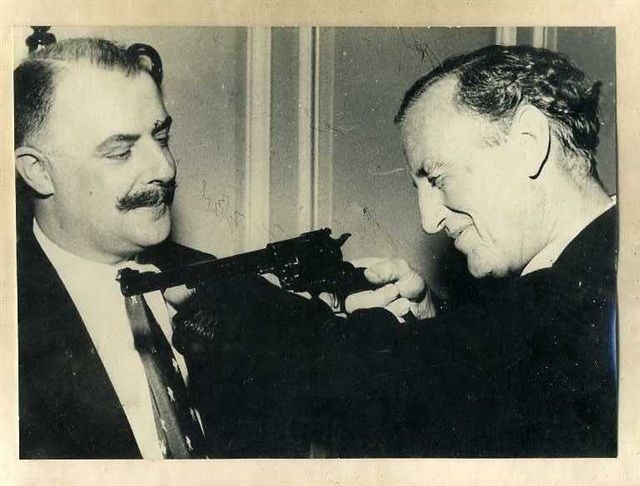
Geoffrey
Boothroyd and Ian Fleming picture from Ivan
Morelius
Geoffrey Boothroyd (Q) and Ian Fleming author
of James Bond
Writer Ian Fleming (1909-1964) created the character of James
Bond 007
Pinewood Studios
Sir WinstonChurchill. Prime
Minister twice (1940-45 and 1951-55)
 Ian Flemings boss M
Ian Flemings boss M
Pierce Brosnan Took 007 into 21st Century
The
James Bond Archives avaible in James Bond 007 Museum Nybro Sweden

Pinewood Studios
|
CASINO ROYALE (1953) by Ian Fleming The Life of Ian Fleming (1908-1964)
Page 2
The Ian
Fleming Novels and Short Stories
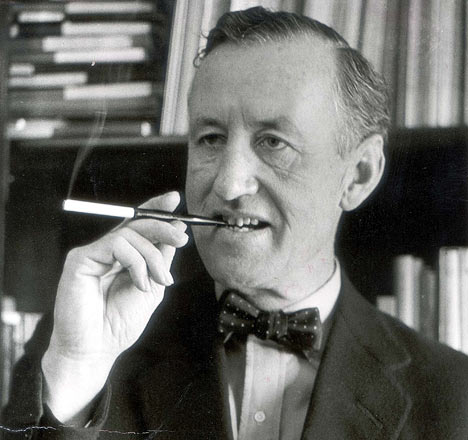
“I take a ridiculous pleasure in what I eat
and drink.”
—James Bond
Casino Royale (1953)
Live And Let Die (1954)
Moonraker (1955)
Diamonds Are Forever (1956)
From Russia With Love (1957)
Doctor No (1958)
Goldfinger (1959)
For Your Eyes Only (1960)
Thunderball (1961)
The Spy Who Loved Me (1962)
On Her Majesty's Secret Service (1963)
You Only Live Twice (1964)
The Man With The Golden Gun (1965)
Octopussy and the Living Daylights (1966)
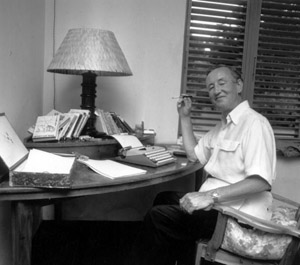 |
Over the past 15 years, James Bond’s
bar choices have been parsed down to exactly three drinks: vodka martinis
(shaken, not stirred), champagne, and whiskey on the rocks. This strict formula
has been in place since The Living Daylights. But it wasn’t always that way.
The literary 007 (and by extension,
the film version) takes his drinking habits from his creator, Ian Fleming. Bond
often shares a love for cocktails such as gin and tonics or stingers that would
strike most of us as highly atypical. According to biographer Andrew Lycett,
Fleming preferred gin and vermouth, and also liked the exotic drinks found
around his winter home in Jamaica. “Fleming himself really didn’t hold his
drink very well. More than two glasses of wine at lunch time and he was done
for.”
According to notes from the archives
of Random House, Fleming’s publisher, this concern with sobriety found its way
into the novels: “Drink relaxed Bond. His only rule was not to get drunk but
perhaps for 20 years he had hardly gone to bed cold sober. His other rules were
not to drink at midday or after dinner, and never to drink liqueurs.” Why does
007 prefer his martinis “shaken and not stirred”? Lycett theorizes that
Fleming thought stirring a drink diminished its flavors.
Interestingly, Fleming’s novels
reverse the simplification trend found in the films. In the initial books, the
drinks are often window dressing, a device to show that Bond is indeed eating
dinner in a swank restaurant or is traveling in a foreign country. But as the
series progresses, the drinks and the circumstances surrounding them become
increasingly more complex, more integral to the plot. This can be attributed to
Fleming’s maturation as a writer, his increased financial success, and his
failing health. The latter found voice in the air of foreboding and melancholy
that pervades the later novels, such as the opening chapters of both Goldfinger
and Thunderball, where Bond’s drinking leads to ruminations on health and
mortality.
Obviously, Fleming used alcoholic
beverages to emphasize the exotic locations to which Bond travels, with 007
often imbibing local wines or liquors. Some are very specific, such as when he
drinks raki in Turkey or saké in Japan. Some are more general: when he’s in
the Western Hemisphere Bond usually has bourbon, and in the Eastern, he often
drinks scotch. Above all, he prefers “solid” drinks.
There are many reasons for James
Bond’s appeal, including foreign locales, beautiful women and extreme danger.
But a large part is certainly his love for the finer things (echoing the growth
of our modern consumer culture), from clothes and cars to good food and
well-made drinks. If you haven’t read Fleming’s novels, you might be
surprised at the James Bond revealed within: a bored and somewhat cynical civil
servant who sometimes drops his jacket on the floor. But as this section tries
to show, you’ll also encounter a man who definitely knows what he wants,
especially at cocktail hour. And if we ourselves live vicariously through 007,
at least we can have a few great martinis on the way.
|
|
The Man with the
Golden typewriter.
Mannen med den Gyllene skrivmaskinen
Ian Fleming
fullbordade sin första James Bond-bok, Casino Royale, eller rättare
sagt den första versionen av boken, i mars 1952. Detta skulle firas!
Fleming lät beställa en förgylld skrivmaskin från USA. Det var inte vilken
skrivmaskin som helst, utan den exklusiva modellen Royal Quiet de Luxe,
som kostade honom hela 174 dollar.
Flemings vänner tyckte att det var ett
onödigt extravagant inköp. Han svarade skämtsamt i ett brev att han nu hade
bett "sina personliga getägare i Marocko" att framställa "1000
ark vellum-papper" som han sedan planerade att bestätta med
"diamanter från Cartier".
Ian Fleming skrev alla sina följande
Bondböcker på sin gyllene skrivmaskin i sitt hus Goldeneye
på Jamaica.
1995 såldes den gyllene skrivmaskinen
på auktion genom Christie's i London. Den gick för 50 000 pund, mångdubbelt
mer än utropspriset, till en anonym köpare.
Det har gått rykten att den anonyme köparen var ingen mindre än Pierce Brosnan, men
Brosnan har själv förnekat detta, och den uppgiften stämmer alltså inte.
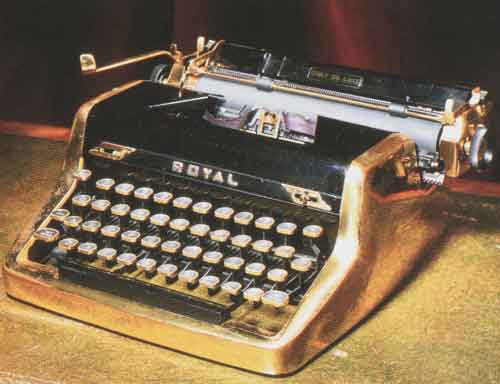
Ian Flemings Goldplatetypewriter Royal Quiet de Luxe.
1952 beställde en gyllene skrivmaskin från The Royal Typewriter
Company i New York.
|
Hur kom prefixet 007 till?
Ian Fleming
valde att ge
agent James Bond kodnumret 007.
Vad betyder det? - vi ser namnet och numret som ett och samma begrepp: James
Bond 007.
Men varifrån tog Ian Fleming numret egentligen? Ja, det är det faktiskt ingen
som kan säga med säkerhet. Fleming fick förstås denna fråga i
intervjuer och han brukade svara att han hade fått idén till numret 007 från
sina år i säkerhetstjänsten under kriget. Så här svarade Fleming i en
intervju 1963:
"Jag knyckte den idén. När jag
var i säkerhetstjänsten i början av kriget inleddes alla topphemliga signaler
med 00-prefixet. Detta ändrades förstås senare av säkerhetsskäl. Jag mindes
det här prefixet och jag beslöt att låna det till Bond för att få hans jobb
att verka mer intressant, och ge honom en licens att döda. I verkligheten kan
förstås vilken spion som helst behöva döda i tjänsten och gör det
antagligen också, oavsett licens eller ej."
Sedan finns det andra teorier också.
En teori som då och då förs fram är att Fleming hade snappat upp numret 007
från en titel på en novell av den berömde brittiske författaren och
Nobelpristagaren Rudyard Kipling (mest känd för
"Djungelboken"). Kipling skrev en novell som faktiskt hette
".007", som handlar om en ångmaskin och ingår i hans novellsamling
The Days Work, som utgavs 1898. Ångmaskinen har i novellen numret 007, så
novellen har inget alls med agenter eller så att göra.
Man vet att Fleming tyckte om Kiplings verk, så det är inte alls omöjligt, om
än litet långsökt, att numret 007 kan ha inspirerats av en av dennes
noveller.
Denna teori har även diskuterats i Kipling Society:s medlemstidskrift.
En tredje tes, är kanske , visas
upp i tv-filmen Goldeneye, som handlar om Flemings liv. Charles Dance,
känd som Claus i For Your Eyes Only spelar Fleming. I den här filmen
får vi i en sekvens se Fleming gå längs en hotellkorridor. Han passerar rum
nr 1007. Det är bara det att en av skruvarna som håller 1:an på plats har
lossnat, så att den hänger på trekvart. På dörren står: 007... och vi kan
se Fleming stanna till och sedan gå vidare.
Det finns även en fjärde teori, nämligen att Fleming skulle ha inspirerats av
numret 007 på en busslinje på Jamaica. Den busslinjen skulle ha passerat
Goldeneye, och Fleming skulle då ha lagt märke till att siffrorna 007 såg
tuffa ut, ingen vet säkert hur det egentligen gick till...
|
|
James
Bond, ornitolog
När Ian Fleming skulle
skriva sin första agentroman, var han ute efter ett bra namn på
sin agent, "så trist som möjligt". En dag föll hans
blick på en av böckerna i sin bokhylla, "Birds of the
West Indies" av James Bond. Fleming sade att det
var ett perfekt namn: kort, oromantiskt men mycket maskulint.
I ett brev till ornitologens hustru erbjöds Bond som
kompensation fri dispositionsrätt till namnet Ian Fleming, som
han kunde ge till någon ovanligt hemsk fågel.
Vem var då den James Bond som
fick släppa till sitt namn till världens mest berömde agent?
Han var en tillbakadragen
amerikansk ornitolog från Philadelphia, vars stora intresse var
fåglarna på de västindiska öarna. Bonds viktigaste verk, som
fortfarande kommer ut i nya upplagor, heter "Birds of the
West Indies. An account with full descriptions of all the birds
known to occur or to have occurred on the West Indian
Islands" (1936).
Flera av fågelarterna i
Västindien riskerade att utrotas, varför Bond gjorde omfattande
fältstudier under många år i området. Han lyckades hitta 170
av 174 tidigare skådade fåglar.
1933 framförde James Bond
teorin att de flesta västindiska fåglarna genetiskt tillhörde
norra Amerika, utom de på Trinidad och Tobago. En David Lack
slog 40 år senare fast denna teori i boken "Island
biology", och myntade där uttrycket Bond´s Line
för gränsen mellan Trinidad, Tobago och området norr därom.
James Bond avled
1989. Han blev 90 år gammal.
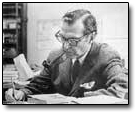
|
"I wanted the simplest, dullest,
plainest-sounding name I could think of. James Bond seemed perfect."
-Ian Fleming
While he may be the world's most famous,
glamorous secret agent, let's face it, his name is pretty dull. In a way
it is fitting, Fleming achieved exactally what he wanted to with the name.
He actually found it sitting on his bookshelf in the author of a book
entitled "Bird's Of The West Indies." And like that, history was
made!

James Bond (January 4, 1900 – February 14, 1989) was a leading American ornithologist whose name was appropriated by writer Ian Fleming for his fictional spy James Bond.
|
"A superb gambling scene, a torture scene which still
haunts me, and, of course a beautiful girl" Raymond Chandler
Plot Summary Back to top
 (from the
original jacket copy of the Jonathan Cape edition)
(from the
original jacket copy of the Jonathan Cape edition)
"The dry riffle of the cards and the soft whirr of the
roulette wheel, the sharp call of the croupiers and the feverish
mutter of a crowded casino hide the thick voice at Bond's ear
which says, "I will count up to ten."
Anyone who has ever gambled will find this tense and sometimes
horrifying story of espionage and high gambling irresistible. So
will readers who have never entered a casino. Connoisseurs of
realistic fiction will particularly note the careful
documentation of the Secret Service background, the chilling
portrait of Le Chiffre, the authentic menace of SMERSH, and the
sensual appeal of the girl in 'soie sauvage'."
 (from the recent Penguin edition)
(from the recent Penguin edition)
"Introducing James Bond: charming, sophisticated,
handsome; chillingly ruthless and very deadly. This, the first of
Fleming's tales of agent 007, finds Bond on a mission to
neutralise a lethal, high-rolling Russian operative called simply
'Le Chiffre' - by ruining him at the baccarat table and forcing
his Soviet spymasters to 'retire' him. It seems that lady luck is
taken with James - Le Chiffre has hit a losing streak. But some
people just refuse to play by the rules, and Bond's attraction to
a beautiful female agent leads him to disaster and an unexpected
saviour."
LIVE AND LET DIE (1954) by Ian Fleming
"Containing passages which for sheer excitement have not
been surpassed by any modern writer of this kind"
Times
Literary Supplement
 Plot Summary Back to top
Plot Summary Back to top
(from the original jacket copy of the Jonathan Cape edition)
"In the higher ranges of Secret Service work the actual
facts in many cases were in every respect equal to the most
fantastic inventions of romance and melodrama. Tangle within
tangle, plot and counter-plot, ruse and treachery, cross and
double-cross, true agent, false agent, double agent, gold and
steel, the bomb, the dagger and the firing party, were interwoven
in many a texture so intricate as to be incredible and yet true.
The Chief and the High Officers of the Secret Service revelled in
these subterranean labyrinths, and pursued their task with cold
and silent passion." SIR WINSTON CHURCHILL in Thoughts and
Adventures.
It is in these higher ranges of Secret Service work that James
Bond operates on the very outside edge of danger, and, in this
story, among hazards no reader will easily forget. "
Ian Fleming's first book Casino Royale, an account of the
gambling assignment that nearly cost Bond his life, was described
as 'the best thriller since the war'.
Live and Let Die, a breath-taking hunt for secret treasure
that takes Bond to Harlem, Florida and Jamaica is still
better."
(from the recent Penguin edition)
"Beautiful, fortune-telling Solitaire is the prisoner (and
tool) of Mr Big - master of fear, artist in crime and Voodoo
Baron of Death. James Bond has no time for superstition - he
knows that Big is also a top SMERSH operative and a real threat.
More than that, after tracking him through the jazz joints of
Harlem, to the Everglades and on to the Caribbean, 007 has
realised that he is one of the most dangerous men that he has
ever faced. And no one, not even the enigmatic Solitaire, can be
sure how their battle of wills is going to end."
MOONRAKER (1955) by Ian Fleming Ian
Fleming
"Irresistibly readable"
Observer
"Fleming is splendid; he stops at nothing" New
Statesman
 Plot Summary Back to top
Plot Summary Back to top
(from the original jacket copy of the Jonathan Cape edition)
"It was Monday and a routine day for James Bond in the
quiet office at the headquarters of the Secret Service. Idly he
ticked off his number - 007- on the charge sheets of the Top
Secret files that had come in over the week-end. He was bored.
Mondays were hell.
Then, suddenly, the red telephone screamed in the quiet room.
'M wants you.' And Bond walked out of his office and into the
assignment that was to put even his adventures in France (Casino
Royale) and Harlem and Jamaica (Live and Let Die) in the shade.
And yet what was to happen to him was to happen out of the
clear blue skies of early summer, here, in England. As it might
have been yesterday. Or, as it might be, some dreadful
tomorrow."
(from the recent Penguin edition)
"At M's request, Bond has gone up against Sir Hugo Drax at
the card table, on a mission to teach the millionaire and head of
the Moonraker project a lesson he won't forget, and prevent a
scandal engulfing Britain's latest defence system. But there is
more to the mysterious Drax than simply cheating at cards. And
once Bond delves deeper into goings-on at the Moonraker base he
discovers that both the project and its leader are something
other than they pretend to be..."
DIAMONDS ARE FOREVER (1956) by Ian Fleming
"Probably the most forceful and driving writer of
thrillers in England" Raymond Chandler
 Plot Summary Back to top
Plot Summary Back to top
(from the original jacket copy of the Jonathan Cape edition)
"James Bond surveyed the glittering diamonds that lay
scattered across the red leather surface of M's desk and wondered
what it was all about.
The quiet grey eyes watched him thoughtfully.
Then M took the pipe out of his mouth and dryly gave Bond
details of the assignment of which even M was afraid. And Bond
walked out of the Headquarters of the Secret Service and into his
greatest adventure.
Greater than Casino Royale? More terrible than Live and Let
Die? More hazardous than Moonraker?
Yes."
(from the recent Penguin edition)
"Meet Tiffany Case, a cold, gorgeous, devil-may-care blonde;
the kind of girl you could get into a lot of trouble with - if
you wanted. She stands between James Bond and the leaders of a
diamond-smuggling ring that stretches from Africa via London to
the States. Bond uses her to infiltrate this gang, but once in
America the hunter becomes the hunted. Bond is in real danger
until help comes from an unlikely quarter, the ice maiden
herself...."
FROM RUSSIA WITH LOVE (1957)
"Mr Fleming is in a class by himself... immense detail,
elaborate settings and continually mounting tension, flavoured
with sex, brutality and sudden death" Daily Mail
"Adds the pleasures of a credible plot to the excitement of
extreme violence. Highly polished, irresistible" Sunday
Times
 Plot
Summary Back
to top
Plot
Summary Back
to top
(from the original jacket copy of the Jonathan Cape edition)
"SMERSH is the Soviet organ of vengeance - of
interrogation, torture and death - and James Bond is dedicated to
the destruction of its agents wherever he finds them.
But, in its turn, the cold eye of SMERSH focuses on James Bond
and far away in Moscow a trap is laid for him - a death trap with
an enticing lure.
Ian Fleming takes us into the headquarters of SMERSH. We watch
Bond's assassination being minutely devised. We meet the
executioner. We sit in at the planning. We inspect the lure.
Then the lever is pulled in Moscow, and in London, Istanbul
and Paris the wheels begin to turn.
Ian Fleming's other Secret Service thrillers - Casino Royale,
Live and Let Die, Moonraker, Diamonds are Forever - may have made
your pulse race.
Be careful of From Russia With Love. Weak nerves will be
shredded by it."
(from the recent Penguin edition)
"Every major foreign government has a file on James Bond,
British secret agent. Now, Russia's deadly SMERSH organisation
has targeted him for elimination - they have the perfect bait in
the irresistible Tatiana Romanova. Her mission is to lure Bond to
Istanbul and seduce him while her superiors handle the rest. But
when Bond walks willingly into the trap, a game of cross and
double-cross ensues - with Bond both the stakes and the
prize."
DR. NO. (1958) by Ian Fleming
"Masterful, beautifully written"
Raymond Chandler,
The Sunday Times
"Fleming, by reason of his plausability, sense of pace,
brilliant descriptive powers and superb imagination, provides
sheer entertainment." Spectator
 Plot
Summary
Plot
Summary
(from the original jacket copy of the Jonathan Cape edition)
"M hasn't forgiven James Bond for the negligence on his
last assignment that nearly cost Bond his life. Brusquely, almost
contemptuously, he tosses Bond a time-wasting, shabby little case
in the Caribbean. It will really be a holiday on an island in the
sun - convalescence.
Angrily Bond accepts his orders. He flies off to Jamaica. The
sun shines, the palm trees wave, the calypsos throb.
But on the horizon a cloud forms. It is no bigger than a man's
hand - an articulated steel hand - the hand of Dr. No!
This, the sixth of Ian Fleming's Secret Service thrillers,
will, as did the others, grip the reader with a taut, suave,
sensual stranglehold. "
(from the recent Penguin edition)
"Dr. No, a sinister recluse with mechanical pincers for
hands and a sadistic fascination with pain, holds James Bond
firmly in his steely grasp. Bond and Honey Rider, his beautiful
and vulnerable girl Friday, have been captured trespassing on Dr
No's secluded Caribbean island. Intent on protecting his
clandestine operations from the British Secret Service, Dr No
sees an opportunity to dispose of an enemy and further his
diabolical research. Soon, Bond and Rider are fighting for their
lives in a murderous game of Dr. No's choosing."
GOLDFINGER (1959) by Ian Fleming
"Nobody does this sort of thing as well as Mr
Fleming." Sunday Times
"Mr Fleming is the best thriller writer since Buchan" Evening
Standard
 Plot Summary
Plot Summary
(from the original jacket copy of the Jonathan Cape edition)
"Goldfinger, the man who loved gold, said, 'Mr Bond, it
was a most evil day for you when you first crossed my path. If
you had then found an oracle to consult, the oracle would have
said to you "Mr Bond keep away from Mr Auric Goldfinger. He
is a most powerful man. If Mr Goldfinger wished to crush you, he
would only have to turn over in his sleep to do so.'
With the lazy precision of Fate, this, Ian Fleming's longest
narrative of secret service adventure, brings James Bond to grips
with the most powerful criminal the world has ever known -
Goldfinger, the man who had planned the 'Crime de la Crime'.
Le Chiffre, Mr Big, Sir Hugo Drax, Jack Spang, Rosa Klebb, Dr
No - and now the seventh adversary, a Goliath of Crime."
(from the recent Penguin edition)
"Auric Goldfinger: cruel, clever, frustratingly careful. A
cheat at Canasta and a crook on a massive scale in everyday life.
The sort of man James Bond hates. So it's fortunate that Bond is
the man charged by both the Bank of England and MI5 to discover
what this, the richest man in the country, intends to do with his
ill-gotten gains - and what his connection is with SMERSH, the
feared Soviet spy-killing corps. But once inside this deadly
criminal's organisation, 007 finds that Goldfinger's schemes are
more grandiose - and lethal - than anyone could have imagined.
Not only is he planning the greatest gold robbery in history, but
mass murder as well..."
FOR YOUR EYES ONLY (1960) by Ian Fleming
"Mr Fleming's licensed assassin is in good form. Few men
can have been able to mix business with pleasure so successfully
as Bond." The Times Literary Supplement
 Plot
Summary
Plot
Summary
(from the original jacket copy of the Jonathan Cape edition)
"The destruction of a Russian hideout at SHAPE head
quarters near Paris; the planned assassination of a Cuban thug in
America; the tracking of a heroin ring from Rome to Venice and
beyond; sudden and ghastly death in the Seychelles islands and,
in between, a story of love and hate in Bermuda.
These are five episodes in a short span of tough life - the
life of James Bond, agent number 007 in the Secret Service."
(from the recent Penguin edition)
"Sudden emergencies and beautiful girls who aren't quite
what they seem are the stock-in-trade of James Bond. And when 007
is on the case there's only one thing you can be sure of - the
result will be thrilling. Whether he's dealing with the
assassination of a Cuban thug in America, the destruction of an
international heroin ring, or sudden death in the Seychelles,
Bond gets the job done. In his own suave and unmistakable
style."
THUNDERBALL (1961) by Ian Fleming
"Good living, sex and violent action - a highly polished
performance, an ingenious plot and plenty of excitement."
Times
Literary Supplement
 Plot Summary
Plot Summary
(from the original jacket copy of the Jonathan Cape edition)
"Thunderball presents the blueprint for a monstrous crime
that could be just around the corner in history.
James Bond is in disgrace. His monthly medical report is
critical of the high living that is ruining his health, and M
packs him off for a fortnight to a nature-cure clinic to be
tuned-up to his former pitch of exceptional fitness. Furiously,
Bond undergoes the shame of the carrot juice and nut cutlet
regime - and thereby minutely upsets the plan of SPECTRE, a new
adversary, more deadly, more ruthless even than Smersh.
Who is SPECTRE? What are its plans? Alas, the organisation is
all to realistically described, its plans all too contemporary
for comfort. Of all James Bond's adversaries, the Chief of
SPECTRE casts the darkest shadow."
(from the recent Penguin edition)
"When a stranger arrives in the Bahamas, the locals barely
turn their heads, seeing another ex-pat with money to burn at the
casino tables. But James Bond has more than money on his mind;
he's got less than a week to find two stolen atom bombs hidden
among the coral reefs. While acting the playboy, Bond meets
Domino, sultry plaything of secretive treasure hunter Emilio
Largo. In getting close to this gorgeous Italian girl, Bond hopes
to learn more about Largo's hidden operation."
THE SPY WHO LOVED ME (1962) by Ian Fleming (with Vivienne Michel)
"Ian Fleming keeps you riveted. His narrative pulls with
the smooth power of Bond's Thunderbird" Sunday Telegraph
 Plot
Summary
Plot
Summary
(from the original jacket copy of the Jonathan Cape edition)
"Vivienne Michel writes: 'The spy who loved me was called
James Bond and the night on which he loved me was a night of
screaming terror in The Dreamy Pines Motor Court, which is in the
Adirondacks in the north of New York State.
'This is the story of who I am and how I came through a
nightmare of torture and the threat of rape and death to a dawn
of ecstasy. It's all true - absolutely. Otherwise Mr Fleming
certainly would not have risked his professional reputation in
acting as my co-author and persuading his publishers, Jonathan
Cape, to publish my story. Ian Fleming has also kindly obtained
clearance for certain minor breaches of The Official Secrets Act
that were necessary to my story."
(from the recent Penguin edition)
"Vivienne Michel is in trouble. Trying to escape her tangled
past, she has run away to the American backwoods, winding up at
the Dreamy Pines Motor Court. A far cry from the privileged world
she was born to, the motel is also the destination of two
hardened killers - the perverse Sol Horror and the deadly Sluggsy
Morant. When a coolly charismatic Englishman turns up, Viv, in
terrible danger, is not just hopeful, but fascinated. Because he
is James Bond, 007; the man she hopes will save her, the spy she
hopes will love her."
ON HER MAJESTY'S SECRET SERVICE (1963) by Ian Fleming
"Bond is what every man would like to be, and what every
woman would like to have between her sheets" Raymond
Chandler, Sunday Times
 Plot
Summary
Plot
Summary
(from the original jacket copy of the Jonathan Cape edition)
" 'It was one of those Septembers when it seemed that the
summer would never end.'
But it did end and winter came in a lethal welter of mystery,
bloodshed and multiple death amidst the snow.
This, the eleventh chapter in the biography of James Bond, is
one of the longest. It is also the most enthralling.
Really the most? Really the most."
(from the recent Penguin publication)
"When Bond rescues a beautiful, reckless girl from
self-destruction, he finds himself with a lead on one of the most
dangerous men in the world - Ernst Stavro Blofeld, the head of
SPECTRE. In the snow-bound fastness of his Alpine base, Blofeld
is conducting research that could threaten the safety of the
world. To thwart the evil genius, Bond must get himself and the
vital information he has gathered out of the base and keep away
from SPECTRE's agents. Which may require the help of someone who
can handle herself at high speed."
YOU ONLY LIVE TWICE (1964) by Ian Fleming
"A sensational imagination"
Sunday Times
"Instructive and entertaining" Cyril Connolly
 Plot Summary
Plot Summary
(from the original jacket copy of the Jonathan Cape edition)
"When Ernst Stavro Blofeld blasted into eternity the girl
whom James Bond had married only hours before, the heart, the
zest for life, went out of Bond. Incredibly from being a top
agent of the Secret Service, he had gone to pieces, was even on
the verge of becoming a security risk. M is persuaded to give him
one last chance - an impossible mission far removed from his
usual duties - and Bond leaves for Japan.
There, coming under the orders of the formidable 'Tiger'
Tanaka, Head of the Japanese Secret Service, the
Koan-Chosa-Kyoku, he is indeed subjected to the shock treatment
his condition demanded.
Shock treatment? The reader will also be subjected to it in
full measure in this, perhaps the most bizarre and doom-fraught
of all James Bond's adventures."
(from the recent Penguin edition)
"Bond, a shattered man after the death of his wife at the
hands of Ernst Stavro Blofeld, has gone to pieces as an agent,
endangering himself and his fellow operatives. M, unwilling to
accept the loss of one of his best men, sends 007 to Japan for
one last, near-impossible mission. But Japan proves to be Bond's
downfall, leading him to a mysterious residence known as the
'Castle of Death' where he encounters an old enemy revitalised.
All the omens suggest that this is the end for the British agent
and, for once, even Bond himself seems unable to disagree."
THE MAN WITH THE GOLDEN GUN (1965) by Ian Fleming
"Fleming keeps you riveted"
Sunday Telegraph
 Plot Summary
Plot Summary
(from the recent Penguin edition)
"A brainwashed James Bond has tried - and failed - to
assassinate M, his boss. Now Bond has to prove he is back on form
and can be trusted again. 'All' 007 has to do is kill one of the
most deadly freelance hit-men in the world - one Paco 'Pistols'
Scaramanga, the Man with the Golden Gun. But despite his licence
to kill, 007 is no assassin, and, on finding Scaramanga in the
sultry heat of Jamaica, he decides to infiltrate the killer's
criminal co-operative - and realises that he will have to take
him out as swiftly as possible. Or 007 might just be the next on
a long list of British Secret Service numbers that the Man with
the Golden Gun has retired..."
OCTOPUSSY AND THE LIVING DAYLIGHTS (1966) by Ian Fleming
"Ian Fleming traces the intricacies of counter-espionage
with all the efficient authority of 007's own secret
reporters." Sunday Times
 Plot Summary
Plot Summary
(from the original jacket copy of the Jonathan Cape edition)
"From Jamaica, paradise of sunshine and exotic fish, to
Berlin, cold grim city of stealth, James Bond pursues two
strangely heroic enemies of the Secret Service. The first is a
dying major whose dwindling hoard of gold conceals an act of
treachery, and the second an assassin whose identity disturbs
Bond's deadly aim.
These two stories, written in 1961 and 1962, were among those
composed by Ian Fleming while he was writing the incomparable
series of James Bond thrillers. The first collection of stories
appeared in 1959 as For Your Eyes Only; a further collection
which he had planned to publish was never completed."
(from the recent Penguin edition)
"For James Bond, British secret agent 007, international
espionage can be a dirty business. Whether it is tracking down a
wayward major who has taken a deadly secret with him to the
Caribbean; identifying a top Russian agent secretly bidding for a
Fabergé egg in a Sotheby's auction room; or ruthlessly gunning
down an unlikely assassin in sniper's alley between East and West
Berlin, Bond always closes the case - with extreme
prejudice."
Uppväxt
Ian föddes den 28 maj 1908 i den snobbiga Londonstatsdelen Mayfair och
fick namnet Ian Lancaster Fleming. Hans familj var välbärgad överklassfamilj.
Ians pappa hette Valentine och var skotte, han arbetade på sin fars berömda
bank, Robert Fleming & Co. Ians mamma, som hette Evelyn St Croix Rose,
var skotsk-irländsk och känd för sin skönhet. Hon kallades allmänt
för Eve. Ian hade tre bröder, Peter som var ett år äldre, samt Richard
och Michael som var tre respektive fyra år yngre än Ian. Familjen var
mycket rik och umgicks i de fina kretsarna, de kände t.ex. Winston
Churchill. Unge Ian blev snart sedd som en liten rebell i familjen. Han
tyckte inte om det hans föräldrar ansåg viktigt, hästar, hundar och släktträffar.
Ian var inte heller speciellt intresserad av Skottland. 1914 utbröt första
världskriget, och Valentine åkte till Frankrike och krigade, där han
snart blev major.
Eve var ensam hemma med de fyra barnen. 1916 skickades Ian och Peter
till en internatskola som hette Durnford. Där läste Ian mycket böcker,
han blev snabbt förtjust i Rober Louis Stevenson och Sax Rohmer. Durnford
var ingen trevlig skola, studieförhållandena var dåliga, det var mycket
mobbning, och maten var usel p.g.a. kriget. Här fick Ian sin första
kontakt med golfen, något han skulle fortsätta att vara intresserad av
hela livet.
Den 20 maj 1917 så dog Ians pappa i kriget i Frankrike. Han blev träffad
av en tysk granat när han skulle ta sig mellan två skyttegravar. Han
fick många hedersutmärkelser, och Winston Churchill skrev han dödsannons
The Times. Ian brukade senare i livet alltid hänga upp sin fars dödsannons
på väggen, Winston hade signerat den. Ian brukade nu se upp till sin äldre
bror Peter. Peter ansågs vara mycket väluppfostrad och begåvad. Ian däremot
ansågs vara lite uppnosig och överdrivet fantasifull, så han kom lite i
skymundan.
Studier
Eve fick vid 32 års ålder ärva från sin rika man, men för att hon
skulle kunna behålla en hög årlig inkomst hade, Valentine testamenterat
att hon fick inte gifta om sig. 1921, när Ian var 13 år skickade hon
Peter och Ian till den ansedda och ryktbara privatskolan Eton, där även
Valentine hade gått. Ian ansågs redan då vara en prydlig och stilig ung
man som var noga med sin klädsel. Men Ian trivdes aldrig på Eton. han
tyckte inte att han passade i där. På ett område var dock Ian framstående.
Han var skolan främsta idrottsman, särskilt i längdhopp och löpning.
Två år i rad, 1925 och 1926, blev Ian mästare på skolan. Att vinna två
år i rad var något mycket ovanligt. Han hade inte ens fyllt 18. Under
sin Eton-tid höll Ian mest ihop med sin storebror Peter, men betraktades
också av vissa som en enstöring och asocial person. Ians mamma Eve var
vid den här tiden ihop med den populäre målaren August John. Våren
1925 åkte hon med honom till Berlin, där “adopterade” hon en flicka
som hette Amaryllis. Ian tyckte det var ett hemskt fult namn.
Ian till Sandhurst
Ian tappade snart intresse för sin studier, och betygen sjönk. Då
bestämde sig Eve för att flytta Ian till en mer disciplinerad miljö, så
det skulle bli lite hyfs på honom. Storebror Peter kunde ju läsa vidare
vid Oxford, medan Ian kunde gå i sin pappas militära fotspår. Ian
flyttades alltså till militärskolan Sandhurst. Här kom de första
rapporterna om att Ian var flickorna favorit. Han var dock en usel
dansare. Trots att en militärskola inte var den rätta platsen för en
individualist som Ian, så gjorde han ganska bra ifrån sig, även om han
aldrig tog utbildningen på allvar. Ian avskydde att rida, men tyckte
mycket om gevärsskytte. 1927 blev Ian antagen till det finaste
infanteriregementet i hela Storbritannien, His Majesty´s List for The
King´s Royal Rifle Corps. Detta hade Eve fixat genom sina kontakter, som
nu sträckte sig ända in i Buckingham Palace. Vid denna tid, beslutades
det att armén skulle “mekaniseras”. Ian och hans kompisar hade ingen
lust att sitta och dra i några spakar. Så han skrev ner sin avskedsansökan
på ett vykort, postade den till skolan, och stack sedan därifrån. Ians
dominanta mamma Eve, var inte glad över detta. Ian hade verkligen visat
sig vara familjen svart får.
Skola i Tyrolen
Eve hade hört talas om en privatskola i Kitzbühel i österrikiska
Tyrolen. Hit skickade hon Ian, där han upplevde några av sina mest
positiva ungdomsår. Skolan låg högt upp bland bergen i en pampig
byggnad som hette Villa Tennerhof. Ägarna till skolan, använde sig av en
effektiv språkundervisning, varför Ian här lärde sig tyska och
franska. Det var även härliga områden att bo i, Ian ägnade fritiden åt
bergsklättring och skidåkning. Han blev också populär bland ortens
flickor. Samtidigt som han umgicks med österrikiska flickor, brevväxlade
han med en flickvän hemma i England. Rektorns fru uppmuntrade Ian att
utveckla sitt skrivande, så han skrev ett par korta noveller. Ian var
mycket intresserad av språk och bestämde sig för att försöka att göra
karriär inom brittiska UD, vilket var mycket svårt.
I München och Geneve
1928 reste Ian till universitetet i München för att förbättra sina
språkkunskaper. Han var då 20 år. I München lärde han sig också
ryska. Året därpå läste han franska vid universitetet i Genève. Nu började
Ian intressera sig för bilar. Ett tag körde han en Bugatti. En gång körde
han 160 km/h på en lång raksträcka i Henley, hemma i England. Han hade
en svart Buick i Genève. Alla dikter som Ian skrev, samlade han i en bok
som trycktes i en mindre upplaga. Senare skämdes Ian över sina
ungdomsdikter, sökte upp alla exemplaren av boken och brände upp dem.
Ian blev förälskad i en schweizisk flicka i Genève, hon hette Monique.
De förlovade sig, och de ville gifta sig med varandra, men Ians mamma sa
nej. Hon tycket inte att Monique var passande åt Ian. Förlovningen bröts,
vilket gjorde Ian mycket bitter. Ian lät senare James Bonds mamma vara en
schweiziska vid namn Monique.
Journalistkarriär på Reuters
Nu hade Ian studerat färdigt, och det var dags att få ett jobb. Ian
hade återigen nytta av sin mammas kontakter, Eve var bekant med chefen för
den brittiska nyhetsbyrån Reuters. I oktober 1931, 23 år gammal började
Ian arbeta på Reuters nyhetskontor. Reuters främsta konkurrent, var den
amerikanska nyhetsbyrån UPI, United Press International. Ian trivdes
snabbt i den stressiga och krävande arbetsmiljön. Han var snart ute på
journalistuppdrag som reporter. Fast Ian gjorde många bra jobb på
Reuters så blev hans karriär oväntat kort. Reuters hade erbjudit honom
chefsposten, för deras kontor i Shanghai, men Ian tackade nej och i
oktober 1933 slutade han på nyhetsbyrån. Ian hade nämligen fått en förfrågan
att gå in som delägare i en bank i London, något han skulle få mycket
pengar för. Familjen Fleming hade ju en egen bank, och Ians mamma ville
att han skulle ta bankjobbet. Press från familjen och pengar var de största
orsakerna till att han tog jobbet. Han sade motvilligt upp sig hos
Reuters. Han berättade senare att åren hos Reuters var några av de
roligaste i hans liv.
Ian som mäklare
Banken där Ian nu började jobba på hette Cull & Co. Där
arbetade han som börsmäklare. Han blev kvar där ända till 1945. Ian
rapporteras ha varit väldigt bra på att köpa aktier, men han tyckte det
var ganska trist. Under 30-talet levde Ian en ungkarls glada dagar. Hans vänner
var lite stela och tråkiga, många var gamla Etonelever. Fleming grundade
tillsammans med en god vän en privatklubb, The Cerde, där man spelade
bridge, drack dyr sprit och serverades eleganta middagar. Ian levde ett
dubbelliv, en duktig börsmäklare på dagen och en partygubbe på kvällen.
Ian hade många flickvänner på Ians ungkarlsvåning på Ebury Street. Där
fick de god mat och dyr champagne. Om de ville kunde de titta i Ians stora
bibliotek. Vid den här tiden började Ian bygga upp sin beryktade
boksamling. Han var en sann bibliofil, som samlade på alla sorters böcker.
Ian köpte specialdesignade lådor, som han förvarande samlingen i. Lådorna
var målade med Ians vapensköld. Den här samlingen, numera känd som The
Fleming Collection, omfattar tusentals böcker och den köptes efter Ians
död av Universitetet i Indiana, USA.
I Hans Majestäts hemliga tjänst
I början av 1939 märkte den 31-åriga Ian att folk började ställa
frågor om honom. Det visade sig att underrättelsetjänsten letade efter
en lämplig kandidat till ett viktigt jobb. Det var en amiral vid namn
John Godfrey som behövde en personlig assistent. Han var chef för det
marina. Godfrey letade efter en kompetent person, och hans val föll till
sist på Ian. Under våren 1939 utsåg Ian till löjtnant i The Royal
Naval Volunteer Reverse. Hans uppgift var att assistera Godfrey på olika
sätt. Det innebar att Ian blev “nummer två” i den brittiska marina
underrättelsetjänsten. Sammanlagt jobbade ett tjugotal i Godfreys stab.
Deras högkvarter låg i ett berömt rum som gick under namnet Room 39.
Ian planerade och organiserade i aktiva operationer, men han deltog själv
aldrig i dem. Ian blev känd för sin uppfinningsrikedom och blev snart
kommendörkapten. John Godfrey var förebilden för “M” i Ians Bondböcker.
En av Ians medarbetare var Charles Fraser- Smith, en påhittig man som
hittade på en massa prylar. T.ex. rakhyvlar med dolda utrymmen, skosnören
som kunde användas som sågklingor och ihåliga golfbollar som man kunde
stoppa hemliga meddelanden i. Charles var en av förebilderna till den
gubbe som i filmerna kallas för Boothroyd och i filmerna “Q”.
Under kriget var det många tyskar som bombade London, och man levde
alltid i ständig fara. En av de många som omkom under bombdåden var
Ians flickvän Muriel, som var motorcykelordonnans. Det var så Ian kom på
inledningen till boken Ur dödlig synvinkel. Ian var själv illa ute tre gånger,
då husen han befann sig i träffades, men han klarade sig oskadd alla tre
gångerna. Ians yngre bror Michael, blev tillfångatagen av tyskarna under
strid, och dog senare i fångenskap.
Fleming bygger hus på Jamaica
Hösten 1944 reste Ian till Jamaica, för att deltaga i en säkerhetskonferens.
Det var första gången han besökte ön, Han bodde hos en god vän under
vistelsen, Ivar Bryce, och han blev väldig förtjust i Jamaica under
vistelsen. Han bad Bryce hjälpa honom att leta efter en tomt, där han
kunde bygga sitt eget hus. I mars 1945 började Ian bygga på sitt eget
hus, som han hade ritat själv. Han döpte det till Goldeneye som är
samma namn som den sjuttonde Bondfilmen. Golden eye var namnet på en
topphemlig underrättelseorganisation under kriget. Han var även förtjust
i en novell av författaren Carson McCullers som hette Reflections in a
Golden Eye. Ian slutade i säkerhetstjänsten i november 1945. Han fick
mycket goda intyg, han hade tjänat sitt land väl, precis som sin far.
Skribent på Sunday Times
Efter kriget blev Ian utrikeschef hos tidningsföretaget Kelmsley.
Detta arbete gjorde det möjligt för honom att resa runt i världen.
Fleming skrev regelbundet artiklar i Sunday Times, och han blev en av
tidningens mest uppskattade skribenter. Ians favoritberättelser var reseäventyr
av olika slag. Ian lyckades genom sin övertalningsförmåga få den kände
författaren Somerset Maugham att skriva i Sunday Times, ett verkligt kap!
Fleming och kvinnorna
Ians förhållande till kvinnor var komplicerat. Hans aptit på kvinnor
var stor, och han var känd för att ha många tillfälliga flickor. Den
evige ungkarlen Ian Fleming skulle dock gifta till sist. Han hade träffat
sin blivande fru Ann O´Neill redan på 30-talet. Hennes dåvarande man
stupade i kriget. Sen började Ian och Ann ett förhållande, det var
passionerat. De hade många gemensamma vänner. 1948 födde Ann en dotter,
som Ian var far till. Dottern, levde dock bara i åtta timmar. Efter det
gifte sig Ann med Ian. Bröllopet ägde rum på Jamaica, den 24 mars 1952.
Ians granne på Jamaica, den kända Noël Coward, var bröllopsvittne.
James Bond, agent 007, föds
Ian hade semester två månader om året, den tillbringade han alltid
sitt hus Goldeneye på Jamaica. det var också där han skulle skriva alla
sina Bondböcker. James Bond föddes den 15 januari 1952, när Ian satte
sig vis skrivmaskinen för att skriva sin första agentthriller. Namnet
James Bond tog Ian från en fågelbok. Fågelbokens författare, var en
ornitolog vid namn James Bond. Det namnet tycket Ian passade utmärkt.
James Bond kom sen och hälsade på Ian vid hans dödsbädd. Ian gjorde två
försök att skriva inledningen till sin första bok Casino Royale, på
det tredje gick det bra. När Ian arbetade fram sina böcker, hade han
inget utkast, utan skrev rakt upp och ner på skrivmaskinen. Han läste
inte vad han skrivit, utan fortsatte framåt hela tiden. handlingen skulle
gå snabbt framåt, det var ju också ett ganska typiskt arbetssätt för
en reporter. Sedan, när han var hemma i England, gick han igenom sin
utkast och rättade till med en blyertspenna. Han lade här till alla
detaljer som han böcker sedan blev kända för. Casino Royale skrevs i
ett rasande tempo. Ian var klar med det första utkastet redan den 18
mars. Det tog alltså bara 3 månader för Ian att skriva en bok. I sina böcker,
använder Ian många händelser med verklighetsbakgrund från sitt eget
liv. Det märks speciellt i den första boken. Ians Bondböcker kännetecknas
av en tydlig kalla kriget miljö. Ian älskade att skriva om olika typer
av spelscener på kasinon, och han var också en riktig mästare på
detta. Vilket märktes redan i den första boken. Ian berättade inte för
sina vänner att han hade skrivit en bok, men en dag i maj 1952 åt han
lunch hemma i London, med en vän som var lektör på det ansedda bokförlaget
Jonathan Cape. Då berättade Ian, och vännen fick läsa hans manuskript.
Ian var mycket ödmjuk, och skämdes nästa över vad han hade skrivit.
Sedan insåg han vilken kick det kunde bli att bli thrillerförfattare.
Ian blev så ivrig att han beställde en förgylld skrivmaskin, som han
sedan skrev alla sina Bondböcker på.
Casino Royale kommer ut
Bokförlaget Jonathan Cape, kunde ge ut boken efter vissa ändringar.
Ian satte genast igång med att renskriva den. I slutet av augusti lämnade
han in den till förlaget. I samma veva, den 12 augusti, föddes Anns och
Ians son Caspar Fleming. Man bestämde att Casino Royale skulle komma ut i
april året därpå. Det för Ian händelserika året 1952 slutade med att
han och Ann köpte en villa vid Victoria Square, London. Det gångna året
hade inneburit en ny start i livet för Ian på många sätt, han hade
gift sig, skaffat barn, köpt hus och startat en karriär som thrillerförfattare.
Den 13 april kom Casino Royale ut i England. Första upplagan trycktes i
4.750 exemplar och såldes slut på en månad. Idag är dessa förstaupplagor
mycket eftertraktade samlarobjekt och är värda tusentals kronor. Denna förstaupplaga
hade ett omslag som var designat av Fleming själv. Boken fick bra kritik
och den gavs ut i USA under 1954. James Bonds långa karriär hade precis
börjat.
Succéförfattaren
James Bond var den man Ian Fleming hade velat vara. Han bar många av
Flemings personlighetsdrag. James Bond var en mycket personligt skapad
karaktär för Fleming. Böckerna om 007 blev hans privata säkerhetsventil.
Ian Fleming började nu få en annorlunda årsrytm: Under årets första
tre månader skrev han en ny roman på Jamaica. Sedan for han oftast till
London för att vara med i lanseringen av den roman han skrivit året
innan. Ungefär samtidigt utgavs i USA den bok han skrivit två år
tidigare. Ian skrev sammanlagt 14 böcker om Bond. Alla blev bestsellers.
Ian åkte till USA en gång och träffade president Kennedy, de blev goda
vänner, och varje gång Ian gav ut en ny bok så skickade han ett
signerat exemplar till Kennedy. Sen angav Kennedy Ians bok From Russia
With Love som nummer nio på en boklista, som den amerikanska tidningen
Life gjorde. Detta gjorde Ian riktigt känd i USA.
Ian Flemings image som bon viveur
Ian Fleming fick allt oftare försöka leva upp till den Bondimage han
själv hade skapat, vilket inte alls var bra för hans hälsa. En
omfattande konsumtion av tobak och alkohol tog ut sin rätt. Fleming
beskrevs ofta i artiklar som en leveman, en bon viveur, som tog vara på
allt det goda i livet. Ett känt fotografi, taget av Cecil Beaton, visar
en belåten Fleming sittande i en stol, bekvämt bakåtlutad som efter en
god middag. Han röker en cigarrett som han håller i ett munstycke. I
bakgrunden kan man se tre champagneflaskor. Tidskriften Life intervjuade
Fleming och porträtterade honom med Bondrekvisita som vapen, spelkort och
en Bentley. Senare under året köpte Ian en ny fräsig bil, en Studebaker
Avanti med svart läderklädsel och elektriska fönsterhissar. Antagligen
var det delar av gaget för filmen Dr. No som Ian handlade för.
Fortsatta framgångar
Under åren 1952-1964 skrev Ian 14 böcker om James Bond. Alla blev
till filmer med Sean Connery, George Lazenby Roger Moore, Timothy Dolton
och nu Pierce Brosnan i huvudrollerna. Det har kommit 19 officiella
Bondfilmer och två inofficiella. Sen filmades de som serier i TV, och
blev också tecknade serier i dagstidningar.
Hjärtattack
Med tiden blev pressen för mycket för Fleming. Den 12 april fick han
sin första hjärtattack. Han segnade ned mitt under ett planeringsmöte på
Sunday Times. På nytt sade läkarna till Fleming att han måste sluta med
både tobak och alkohol. Medan han låg på sjukhuset och återhämtade
sig, fick han idén till en barnbok om en flygande bil. Han skissade fram
det som skulle bli boken Chitty Chitty Bang Bang. Redan i slutet av maj
skickade han manuskriptet till sitt förlag. Kommendör Pott säger i
boken “Säg aldrig nej till ett äventyr. Säg alltid ja, annars kommer
du att leva ett trist liv”. Det kunde ha varit Flemings eget valspråk.
Sista dagarna
Under våren 1964 togs Ian in på sjukhus. Han hade fått en blodpropp
i ena lungan. Till sina vänner sade han att The Man With The Golden Gun
var den sista boken om Bond, eftersom hans energi nu var slut. Ian var för
svag för att orka omarbeta bokmanuset på det sätt han ville. Ians vänner
berättar om hur tystlåten och melankolisk han var vid denna tid.
Motvilligt gick han med på en vistelse på The Dudley Hotel i Brighton. Många
dagar satt Ian bara på en bänk eller vid ett fönsterbord och tittade på
Engelska kanalen. Han var helt ointresserad av de litterära priser och
utmärkelser som hade tilldelats honom. Den 11 augusti orkade i alla fall
Ian ta sig till klubben för att äta lunch. På kvällen åt paret
Fleming middag på sitt hotell tillsammans med en god vän. Dagens ansträngningar
blev dock för mycket för Ian: han kollapsade och man fick tillkalla
ambulans. När Ian bars in i ambulansen sade han till ambulansförarna:
“Jag är ledsen att jag orsakat er extra besvär, grabbar”. Kl 21.30
anlände ambulansen till Kent and Canterbury Hospital. I mer än tre och
en halv timme kämpade läkarna för att rädda hans liv, de försökte
med syrgas, med injektioner, men det var förgäves. Kl 01.10 på morgonen
den 12 augusti 1964 förklarades Ian Fleming död. Han blev 56 år. Samma
dag fyllde hans son Caspar 12 år. Tre dagar senare hölls Ians begravning
i den lilla kyrkan St James’ i Sevenhampton. Ian Fleming var död, men
hans skapelse, James Bond 007, var piggare än någonsin. Senare samma år
släpptes den tredje Bondfilmen, Goldfinger, som fick Bondmanin att blomma
ut fullständigt. Ian missade alltså hela den enorma Bondhysteri som bröt
ut bara några månader efter hans bortgång. Ann Fleming sade dock alltid
att James Bond bara lyckades döda en enda människa, och det var sin egen
skapare, Ian Fleming.
|
Ian Fleming, the father of James Bond
Ian Fleming was born in 1908. He was a British writer who wrote books
about an English spy called James Bond with the codename 007.
The 00 stands for that he’s got license to kill anyone, anytime,
anywhere.
At the time of his writing the cold war was at its peak.The cold war was
also one reason why his books became as successful as they did.
Ian Flemming wrote twelve books about the spy James Bond.
In 1964 Ian Fleming died and at that time only two James Bond films had
been produced. It was the movies that made James Bond famous worldwide.
James Bond Actors
There’s been five actors playing Mr Bond more than one time:
Sean Connery, Roger Moore, Timothy Dalton, Pierce Brosnan and Daniel Craig
Many people have different opinions which of them is the real Bond.
Most of them say it’s Sean Connery because he was first playing Bond.
I think Pierce Brosnan is best as James Bond
James Bond
James Bond works for the British government and gets his missions from
them.
The stories about James Bond are all about how he tricks all his enemies
and gets all the nice women. His enemies are often Russian criminals.
This seems to be a common action story but the Bond films are special.
James Bond is never stressed or scared. Even if he is in a very critical
situation like jumping after an aeroplane which is falling to the ground
climb into the plane and fly away with it.
This seems to be very dangerous but for Mr Bond it’s a piece of cake.
At his base in London somewhere he’s got this guy who helps him called
Q. He’s participated in almost every bond movie.
He produces lots of gadgets in his laboratory, which are supposed to help
Mr Bond on his missions. In every film he gets a new car from Q.
Q always tells bond to be careful with the car and he’s like yeah yeah
and crashes the car in every film.
We also have this woman called moneypenny, who seems to be in love with Mr
Bond but never gets him.
Another classical character in the bond films is one of his enemies who is
a very big man called Jaws. He’s got metal teeth and is very strong but
he’s not very smart so he always screws up and falls out of aeroplanes
without a parachute but always survives. He never says anything and no one
knows why. One exemption for that is in the film moonraker when he becomes
friend with Mr Bond says cheers with a champagne glass in his hands.
Mr Bond also has some things he says in every film like “Hi my name is
Bond, James Bond” and “I want dry martini shaken not stirred”.
All these things are classical for almost every bond film.
Some other classical things in the bond films are all the sponsors that
want their names in the film. In the early movies Mr Bond always drove an
Aston Martin car but in today’s movies he drives a BMW.
He’s always got an Ericsson cellphone and he always drinks Bollinger
Champagne.
Why did these companies pay money to have their name in the film?
Some people have Mr Bond as an idol and they want to be alike him and
hopefully they will use the same champagne or the same car as he does.
That may sound very farfetched but they actually make more money out of
this then they pay for having their name in the films.
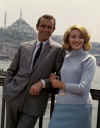
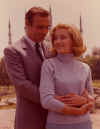
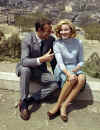
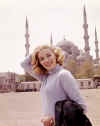
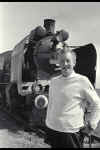
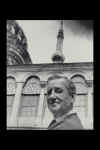
Chitty Chitty Bang Bang: Den magiska bilen
Av Ian Fleming till sin son Casper när han föddes 1952
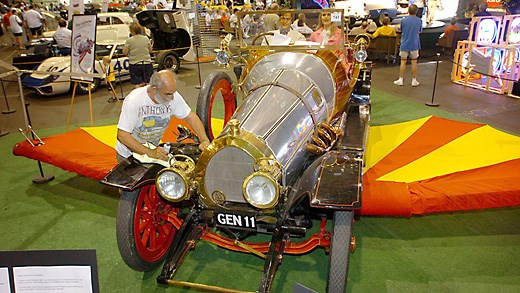

http://sverigesradio.se/sida/artikel.aspx?programid=478&artikel=4416900
Ian Fleming skrev "Chitty Chitty Bang Bang: Den magiska
bilen" till sin son, boken publicerades 1964. Den berättar historien
om en bil som får eget liv och börjar flyga. Berättelsen har blivit både
musikalfilm och teaterföreställningar.
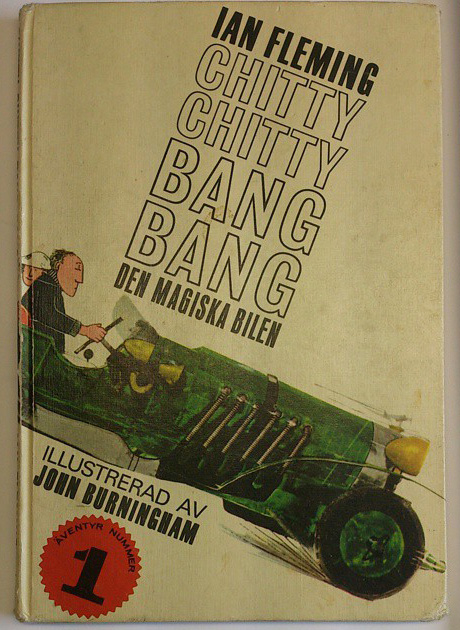
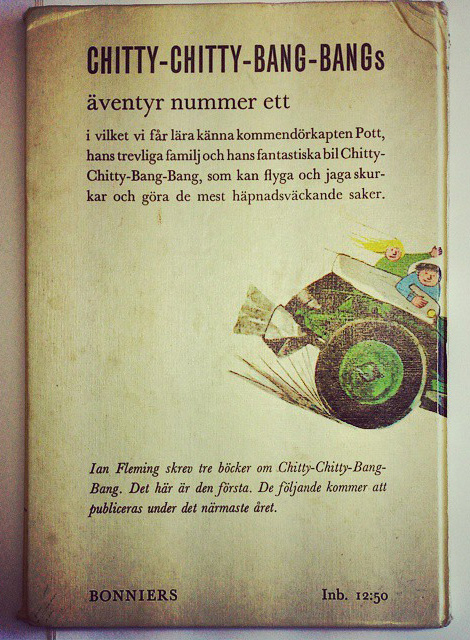
Chitty Chitty Bang Bang: Den magiska bilen
| Author |
Ian
Fleming |
| Illustrator |
John
Burningham |
| Cover artist |
John Burningham |
| Country |
United Kingdom |
| Language |
English |
| Genre |
Children's literature |
| Publisher |
Jonathan
Cape |
|
Publication date
|
22 October 1964 |
| Media type |
Print (hardcover) |
| Pages |
46 (Volume 1) |
|
OCLC |
427190610
(Volume 1) |
| Followed by |
Chitty Chitty Bang Bang Flies Again |
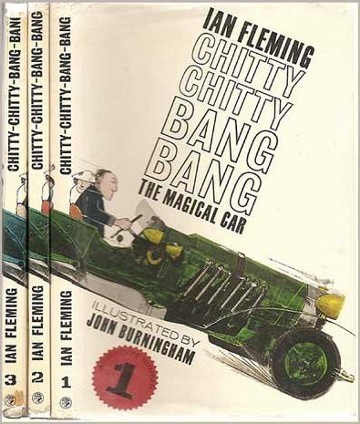
Chitty-Chitty-Bang-Bang: The Magical Car is a children's
novel written by Ian
Fleming for his son Caspar, with illustrations by John
Burningham. It was initially published in three volumes, the first of
which was released on 22 October 1964 by Jonathan
Cape in London. Caspar, who was talented and clever with a passion
for collecting, especially Egyptian artefacts.
It was on his twelfth birthday, August 12th 1964, that his father died. In
his teenage years he frequently got into trouble, and then mental health
problems began to manifest themselves. He committed suicide in
1975.
Born - Died born Casper 19520812
1952-1975 12 augusti Jamaica (1946 – 1964) |








![]()
![]()
![]()
![]()
![]()
![]()































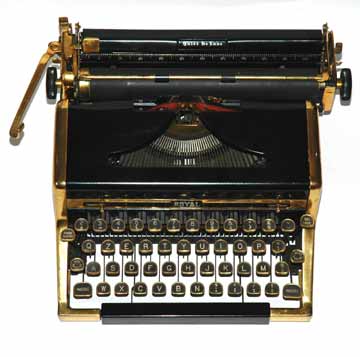
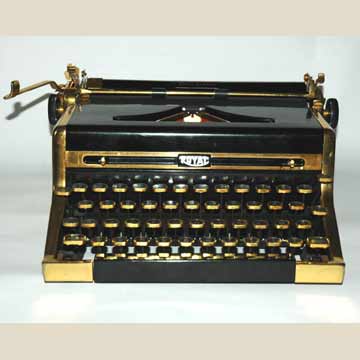
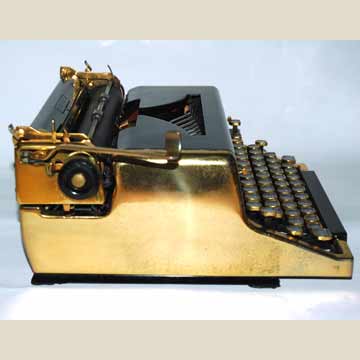

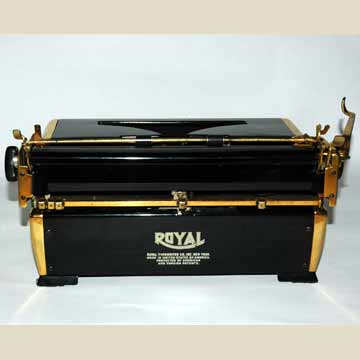
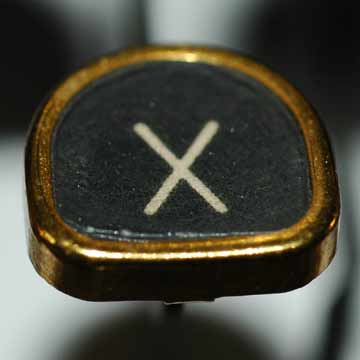
 (from the
original jacket copy of the Jonathan Cape edition)
(from the
original jacket copy of the Jonathan Cape edition) 
 Plot Summary
Plot Summary  Plot Summary
Plot Summary 

 Plot
Summary
Plot
Summary  Plot Summary
Plot Summary  Plot
Summary
Plot
Summary  Plot Summary
Plot Summary  Plot
Summary
Plot
Summary Plot
Summary
Plot
Summary  Plot Summary
Plot Summary  Plot Summary
Plot Summary  Plot Summary
Plot Summary 











